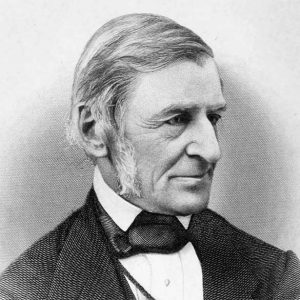Jericho Williams, Spartanburg Methodist College
At the small liberal arts school where I work, we begin the fall 2022 semester with an assortment of challenges, including budgetary cuts, the cancellation of a school-issued Chromebooks program that assisted our neediest students, and high campus-wide turnover. Concerns about student well-being, success, and retention also persist following the Covid-19 pandemic.
Since my students have spent so much of their class time during the past two years in front of a screen, I have been contemplating the benefits of their turning off their screens in a required freshman-level, writing-about-literature course. In particular, as I read Ralph Waldo Emerson’s journals this summer, I found myself thinking about the relationship between Emerson’s habit of daily journaling and its impact on his more formal public lectures, collected writings, and essays. As I already use a process approach when teaching writing, I have decided to experiment with drawing from Emerson’s journals rather than incorporating “Self-Reliance,” and also to reintroduce the idea of physical class journals, which is a teaching method I have not used in years.
I want to explore ways for my students to express themselves offline. Emerson extolled the complexities of the inner life of all humans, so my hope is to empower students by suggesting that not all their daily interactions need to be documented and submitted via a technological apparatus. At my college, the only device that I can count on all students having in the classroom is a cell phone, so I do not want to disadvantage others by assigning daily writing assignments that must be submitted digitally. Separate from these practical matters, I am interested to see what students will think of journaling each day throughout the course of class, as a means to express themselves, document their thoughts, and generate ideas that might inform their more formal assignments such as an analytical essay and a research project.
I also believe that Emerson’s journals, particularly during his late teens and early twenties, contain a variety of experiences that students might find relatable. For example, Emerson considers the relationship between the arts and the mind (January 12, 1822) (Rosenwald 29), youthful aspirations and doubts (May 13th, 1822) (Rosenwald 44), and inner conflicts of how to spend one’s life and time (September 1823) (Rosenwald 75-76). Two hundred years later, these concerns are still relevant, and the spirit Emerson displays is approachable and discussion-worthy.
My hope in incorporating daily journal exercises and referencing entries such as these will be to develop an alternative approach to Emerson that introduces him not as a distant sage from the past, but as a former young person whose worries and thoughts were similar to ones that students have today. Lawrence Rosenwald, editor of two volumes of Emerson’s Selected Journals (Library of America, 2010) argues that Emerson’s journals should be viewed as “a great literary work in themselves,” partly because they are “more intimate, conversational, [and] spontaneous” (813). This description could easily double for what many teachers wish their classroom atmospheres might return to following a couple of years of screen-mediated learning.
Works Cited
Emerson, Ralph Waldo. Selected Journals, 1820-1842. Edited by Lawrence Rosenwald. Library of America, 2010.
